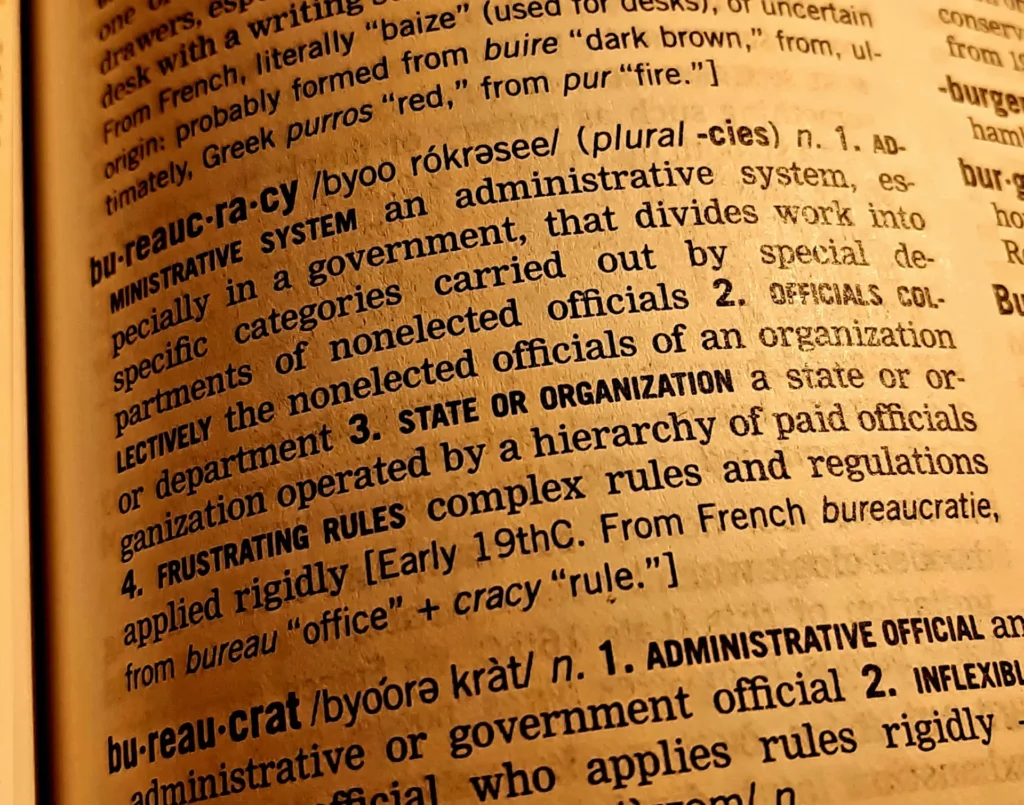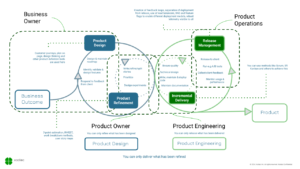As we introduce technology into our organizations and transform the way they deliver value, bureaucracy is often cited as a common barrier. So why have it at all?
As organizations grow, the “side of desk” style of management eventually starts to fail. Communication becomes more complex as you add more people and more teams. For the company to continue delivering high-quality value, they put standards into place. Governance exists to support the continued delivery of business as usual and the satisfaction of regulatory requirements. However, too much management feels bureaucratic. What would be great would be to have just enough to support your governance needs without hindering innovation.
So how do you create your Minimum Viable Bureaucracy (MVB)?
What is a MVB?
The general agreement is that bureaucracy can be terrible (see point four in the image above). Too much bureaucracy slows the organization down and reduces its ability to react to outside pressures. At the same time, to scale, we need to have specific rules in place to ensure consistency in delivery and satisfy regulators.
We can define a Minimum Viable Bureaucracy as the balance between these opposing forces. It is far from a static target and will vary with the ebbs and flows of the organizational delivery of value.
If you would like to do some further reading, I have included a couple of links at the end.
For small organizations
Leadership changes with organizational growth. In addition to needing a different type of leader, you also need additional ways of aligning people to how the company behaves and operates. This requires strong, consistent and constant broadcasting of the company values and can become especially tricky under extreme growth.
Processes naturally come more and more into play. The answer to “how do I do this?” for new employees needs to be clear and obtainable, so you don’t end up with poor implementation and customer experience. Robust knowledge management practices and reliable communication channels are essential. To reinforce this over time and remain nimble, we look to create a culture that will question and learn. By necessity, one where it is not only safe to ask questions, but expected.
Even the most collaborative organizations can struggle with this as they grow. It isn’t easy, and we’ve seen organizations as small as twenty people struggle to get it right. However, the benefits of getting it ingrained early and refining as you grow are without question.
For larger organizations
In larger organizations, the processes have already been put in place by necessity. They already got there. What is different is that often these processes are ingrained and a culture of reflection is absent. It is especially hard when the reason for the rules is not always apparent due to the complexity of the system or when organizational hierarchy stands in the way of changing those rules.
Unfortunately, the same set of processes that enabled the growth of the company are often now holding it back from the necessary changes Digital Transformation brings. The complexity brought about by the growth of the company needs to dealt with to help the company move forward. Often this complexity debt needs to be paid down for the transformation to have its most significant impacts.
To begin questioning the processes as they stand today, we need to start with creating visibility into the delivery of value. This is critical as without it, we won’t be able to show our progress and continue to justify the investment in change. Once we have visibility, we can look into how we can control the system. It is here that we can bring in the question of what is the minimum amount of bureaucracy we need to meet our governance goals.
Commonality
In both cases, the core idea is to create an environment where you are questioning and learning. Creating this environment allows you to address what governance you need and target covering your needs without stifling the organization.
Conclusion
To create your Minimum Viable Bureaucracy is not a one-time event; it is continuously evolving. For it to develop the way you want requires effort.
A good starting point is understanding where you are today, which is where Xodiac and our partners can help you. Once we have identified the bottlenecks in your process, we can help you design and implement your roadmap to successful Digital Transformation supported by your very own Minimum Viable Bureaucracy.
As promised, here are a couple of interesting blogs on the subject:
- There is an interesting post on Minimum Viable Bureaucracy on the subject. (and a summary here if you don’t have time for the whole thing)
- For a slightly different take, try this one on How to build a minimum viable bureaucracy.




